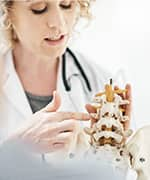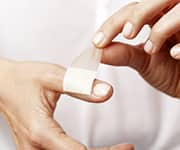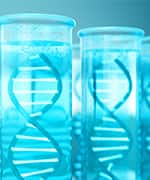Life Extension Magazine®
Lactoferrin is a multi-functional protein known for its ability to support immunity.
Research in preclinical1-5 and clinical settings6,7 reveals how lactoferrin helps prevent growth of microbes, including bacteria and viruses, in healthy cells.
A recent clinical trial in Japan found that this protein has properties that can help mitigate infectious diseases including summer colds.8
Emerging preclinical data suggest that lactoferrin can also help promote cellular regeneration.3 In other words, it has potential to help the body heal and repair itself.
What is Lactoferrin?
Lactoferrin is a protein primarily found in milk, tears, nasal fluids, saliva, and secretions from gastro-intestinal, and reproductive tissues.1,9
It is also found in blood plasma,9 immune cells such as neutrophils,10 and macrophages.1 It helps facilitate immune responses against pathogens such as bacteria, parasites, fungi, and viruses.1
Lactoferrin Against Viral Illnesses
Lactoferrin is present in our body and is a factor in the body’s defense against infections.
It strengthens the immune system by blocking the direct viral invasion of cells.11
One unusual feature of lactoferrin is the diversity of viruses it can shield against. It possesses robust antiviral activity against viruses that cause the common cold and flu, gastroenteritis, hepatitis B and C, herpes simplex, Epstein-Barr virus, and more.4,11
Lactoferrin also has indirect antiviral effects. It helps the body fight against a virus by activating immune defenses. It boosts the activity and number of natural killer cells.1,12,13 Viruses replicate inside cells. Natural killer cells can recognize abnormal cells, including those infected by viruses, and destroy them. This can help prevent the spread of a virus in the body.
Lactoferrin also stimulates the production of other antiviral compounds, including the signaling proteins known as interferons.2,8,11
Lactoferrin may also help block the ability of viruses to reproduce even if they’re already inside cells.11 This helps limit the spread of the virus, potentially reducing the severity of the resulting illness.
While some lactoferrin is produced in the body, oral intake can boost its levels.
In more recent years, scientists have conducted research into its potential ability to help the body repair damaged tissues and cells.
Regenerative Properties
Inflammation and oxidative stress can severely harm cells, leading to deterioration of body systems and chronic disease.
Preclinical studies have shown lactoferrin’s anti-inflammatory and antioxidant properties help protect against that damage.14 It works by stimulating anti-inflammatory molecules,2,13 inhibiting pro-inflammatory molecules,2,15,16 and scavenging free radicals 14,17-19 to reduce oxidative stress.20-23
Lactoferrin also has direct properties of regeneration and repair. It can:
- Bind and interact with DNA to protect genetic material against damage,14
- Promote healthy cell division,24 and
- Spur differentiation of stem cells (when stem cells mature and develop into specialized cell types).25,26
Together, these actions may help the body repair itself and even reverse some of the damage that comes with aging.
Bone Benefits
Much of the research on lactoferrin’s regenerative qualities has focused on bone health.
Studies have found that lactoferrin can promote proliferation of bone-forming cells known as osteoblasts and the differentiation of stem cells into bone cells.3,27 Preclinical studies have shown it can also activate bone-building signals that normally halt with age.28-30
This could be important for people with osteoporosis, in which bones become brittle and prone to fractures.31 Osteoporosis is alarmingly common, affecting 30% of women aged 50 or older, 77% of women over 80, 16% of men 50 or older, and 46% of men over 80.32
In a randomized placebo-controlled human trial, women aged 45 to 60 years, who were at high risk for osteoporosis, were given 125 mg per day of lactoferrin (enriched with an enzyme from milk called ribo-nuclease) for 180 days. In those who received the lactoferrin, there was a significant reduction in bone resorption and an increase in bone formation.33
One of the side effects of bisphosphonates (drugs to prevent bone loss) is osteonecrosis (in which bone dies due to low blood flow).
In a study of people with bisphosphonate-induced osteonecrosis, a lactoferrin-saturated dressing was applied directly to wounds after surgical removal of dead bone. Bone healing and wound closure were complete in just one to two weeks, compared with two to three months under usual treatment.34
Other studies have shown that lactoferrin inhibits the process of bone breakdown.3,35 Lactoferrin may also be able to offset bone degeneration and promote regenerative processes, preserving bone mass and improving bone architecture.36
Another human study shows lactoferrin supplementation to be beneficial in people with periodontal disease 37
What you need to know
The Regenerative Power of Lactoferrin
- Lactoferrin is a milk protein often consumed as a dietary supplement to support immune health.
- Research shows that lactoferrin is active against a wide assortment of pathogens.
- It works by helping to block viral invasion of cells and by amplifying the immune system’s power to eliminate viral infection from the body.
- Early research has shown that lactoferrin can promote cellular and tissue regeneration and repair, processes that help the body reverse damage.
- Preclinical research shows that lactoferrin has anti-cancer effects.
- Research suggests that lactoferrin may spur the formation of new blood vessels, helping restore blood flow to damaged tissue.
Repairing Cartilage and Tendons
Like bone, cartilage tends to wear down with age, leading to pain and stiffness at the joints. Osteoarthritis, the most common type of arthritis,38 and disc degenerative disease both involve the progressive deterioration and degradation of vertebral discs and cartilage.39
A lactoferrin-derived peptide has shown promise in addressing these degenerative processes. In preclinical studies, it was found to inhibit inflammatory mediators and break down processes in joint cartilage40-42 and discs.42,43
Tendons are fibrous tissues that attach muscle to bone. In an animal model, a lactoferrin-derived peptide was effective in enhancing tendon repair after injuries that result in loss of functional mobility.44
A human trial in patients undergoing tendon repair surgery found that injection of the same peptide into the surgical site led to a significant improvement in function and mobility.45
Wound Healing
Lactoferrin has also shown great potential as a wound-healing agent.
In a clinical trial in diabetic patients, a population prone to chronic skin ulcers, application of a gel that incorporated a synthetic form of lactoferrin resulted in reduced neuropathic ulcer size.46
In cell and animal models of burn wounds, a plant-derived lactoferrin that is identical to human lactoferrin stimulated skin cell function and wound healing.47
In preclinical studies, direct application of lactoferrin also accelerates the wound-healing process in the cornea of the eye, 48,49 and the mucous lining of airways.50
Emerging Applications
A review published in 2021 noted lactoferrin’s ability to modulate growth, proliferation, and differentiation of stem cells into osteoblasts.
The review also indicated the potential of lactoferrin in supporting angiogenesis (formation of new blood vessels).3 Blood vessel development is a vital step in regenerative medicine as it enables the restoration of blood flow to damaged tissues.51
"Talactoferrin" is a recombinant protein, a synthetic drug form of human lactoferrin. Preclinical studies of skin wounds show that talactoferrin can increase the healing rate and decrease the healing time of the wound.52
Lactoferrin has also shown anti-cancer effects, contributing to cell-cycle arrest and cell death in cancerous cells.53,54 In an animal study, lactoferrin in conjunction with other factors substantially suppressed prostate tumor growth in mice.55
More clinical research remains to be done, but lactoferrin holds great promise in helping the body repair itself and in promoting overall health.
Potential Benefits of Lactoferrin
- In cartilage models, a lactoferrin-derived peptide helped preserve tissue and suppress inflammation.40,41,56
- A synthetic peptide derived from lactoferrin, injected into the surgical site in human tendon repair surgery, resulted in improved sensory and mobility recovery.45
- In a rodent, as well as a bone cell model, it promoted healthy bone metabolism and structure.29,57
- The same lactoferrin-derived peptide promoted preservation of intervertebral disc cells.43
- In a clinical trial, a topically applied gel made with a synthetic lactoferrin drug promoted significantly greater healing of diabetic neuropathic ulcers.46
- In laboratory and animal models, direct application of lactoferrin aided in healing the corneal tissue that forms the surface of the eye.48,49
- In a preclinical study, a plant-derived lactoferrin that is identical to human lactoferrin stimulated skin cell function and wound healing.47
- Evidence from preclinical studies indicates it may possess various anti-cancer effects.1,12,54
Supplementing with Lactoferrin
Lactoferrin has a wide range of benefits. A typical dose of lactoferrin is 300 mg once or twice daily.
Taken orally, lactoferrin is readily absorbed and can play an important role in bolstering defenses against viral illnesses.
Summary
Many people consume lactoferrin for immune support. A significant amount of preclinical research has shown that various forms of this protein, or its derivatives, may also aid the body’s regenerative processes, helping to repair damage to bone, cartilage, and tendons, speed the healing of wounds, and more.
These and other effects hold great promise for our approach to osteoporosis, arthritis, and other degenerative disorders.
If you have any questions on the scientific content of this article, please call a Life Extension Wellness Specialist at 1-866-864-3027.
References
- Moreno-Exposito L, Illescas-Montes R, Melguizo-Rodriguez L, et al. Multifunctional capacity and therapeutic potential of lactoferrin. Life Sci. 2018 Feb 15;195:61-4.
- Drago-Serrano ME, Campos-Rodriguez R, Carrero JC, et al. Lactoferrin: Balancing Ups and Downs of Inflammation Due to Microbial Infections. Int J Mol Sci. 2017 Mar 1;18(3).
- Antoshin AA, Shpichka AI, Huang G, et al. Lactoferrin as a regenerative agent: The old-new panacea? Pharmacol Res. 2021 May;167:105564.
- Costagliola G, Nuzzi G, Spada E, et al. Nutraceuticals in Viral Infections: An Overview of the Immunomodulating Properties. Nutrients. 2021 Jul 14;13(7).
- Kell DB, Heyden EL, Pretorius E. The Biology of Lactoferrin, an Iron-Binding Protein That Can Help Defend Against Viruses and Bacteria. Front Immunol. 2020;11:1221.
- Sinopoli A, Isonne C, Santoro MM, et al. The effects of orally administered lactoferrin in the prevention and management of viral infections: A systematic review. Rev Med Virol. 2022 Jan;32(1):e2261.
- Presti S, Manti S, Parisi GF, et al. Lactoferrin: Cytokine Modulation and Application in Clinical Practice. J Clin Med. 2021 Nov 23;10(23).
- Oda H, Wakabayashi H, Tanaka M, et al. Effects of lactoferrin on infectious diseases in Japanese summer: A randomized, double-blinded, placebo-controlled trial. J Microbiol Immunol Infect. 2021 Aug;54(4):566-74.
- Superti F. Lactoferrin from Bovine Milk: A Protective Companion for Life. Nutrients. 2020 Aug 24;12(9).
- Actor JK, Hwang SA, Kruzel ML. Lactoferrin as a natural immune modulator. Curr Pharm Des. 2009;15(17):1956-73.
- Wakabayashi H, Oda H, Yamauchi K, et al. Lactoferrin for prevention of common viral infections. J Infect Chemother. 2014 Nov;20(11):666-71.
- Zhang Y, Lima CF, Rodrigues LR. Anticancer effects of lactoferrin: underlying mechanisms and future trends in cancer therapy. Nutr Rev. 2014 Dec;72(12):763-73.
- Legrand D. Overview of Lactoferrin as a Natural Immune Modulator. J Pediatr. 2016 Jun;173 Suppl:S10-5.
- Bukowska-Osko I, Sulejczak D, Kaczynska K, et al. Lactoferrin as a Human Genome "Guardian"-An Overall Point of View. Int J Mol Sci. 2022 May 8;23(9).
- Hwang SA, Wilk KM, Bangale YA, et al. Lactoferrin modulation of IL-12 and IL-10 response from activated murine leukocytes. Med Microbiol Immunol. 2007 Sep;196(3):171-80.
- Kruzel ML, Zimecki M, Actor JK. Lactoferrin in a Context of Inflammation-Induced Pathology. Front Immunol. 2017;8:1438.
- Liu H, Wu H, Zhu N, et al. Lactoferrin protects against iron dysregulation, oxidative stress, and apoptosis in 1-methyl-4-phenyl-1,2,3,6-tetrahydropyridine (MPTP)-induced Parkinson’s disease in mice. J Neurochem. 2020 Feb;152(3):397-415.
- Ogasawara Y, Imase M, Oda H, et al. Lactoferrin directly scavenges hydroxyl radicals and undergoes oxidative self-degradation: a possible role in protection against oxidative DNA damage. Int J Mol Sci. 2014 Jan 14;15(1):1003-13.
- Ward PP, Cunningham GA, Conneely OM. Commercial production of lactoferrin, a multifunctional iron-binding glycoprotein. Biotechnol Genet Eng Rev. 1997;14:303-19.
- Legrand D, Pierce A, Elass E, et al. Lactoferrin structure and functions. Adv Exp Med Biol. 2008;606:163-94.
- Shoji H, Oguchi S, Shinohara K, et al. Effects of iron-unsaturated human lactoferrin on hydrogen peroxide-induced oxidative damage in intestinal epithelial cells. Pediatr Res. 2007 Jan;61(1):89-92.
- Wang B, Timilsena YP, Blanch E, et al. Lactoferrin: Structure, function, denaturation and digestion. Crit Rev Food Sci Nutr. 2019;59(4):580-96.
- Kowalczyk P, Kaczynska K, Kleczkowska P, et al. The Lactoferrin Phenomenon-A Miracle Molecule. Molecules. 2022 May 4;27(9).
- Adlerova L, Bartoskova, A., Faldyna, M. Lactoferrin: A Review. Veterinarni Medicina. 2008;53(9):457-68.
- Icriverzi M, Bonciu A, Rusen L, et al. Human Mesenchymal Stem Cell Response to Lactoferrin-based Composite Coatings. Materials (Basel). 2019 Oct 18;12(20).
- Ying X, Cheng S, Wang W, et al. Effect of lactoferrin on osteogenic differentiation of human adipose stem cells. Int Orthop. 2012 Mar;36(3):647-53.
- Amini AA, Nair LS. Lactoferrin: a biologically active molecule for bone regeneration. Curr Med Chem. 2011;18(8):1220-9.
- Li Y, Wang J, Ren F, et al. Lactoferrin Promotes Osteogenesis through TGF-beta Receptor II Binding in Osteoblasts and Activation of Canonical TGF-beta Signaling in MC3T3-E1 Cells and C57BL/6J Mice. J Nutr. 2018 Aug 1;148(8):1285-92.
- Liu M, Fan F, Shi P, et al. Lactoferrin promotes MC3T3-E1 osteoblast cells proliferation via MAPK signaling pathways. Int J Biol Macromol. 2018 Feb;107(Pt A):137-43.
- Chen XW, Li YH, Zhang MJ, et al. Lactoferrin ameliorates aging-suppressed osteogenesis via IGF1 signaling. J Mol Endocrinol. 2019 Jul;63(1):63-75.
- Available at: https://www.bones.nih.gov/health-info/bone/osteoporosis/overview. Accessed Aug, 2022.
- Wright NC, Saag KG, Dawson-Hughes B, et al. The impact of the new National Bone Health Alliance (NBHA) diagnostic criteria on the prevalence of osteoporosis in the USA. Osteoporos Int. 2017 Apr;28(4):1225-32.
- Bharadwaj S, Naidu AG, Betageri GV, et al. Milk ribonuclease-enriched lactoferrin induces positive effects on bone turnover markers in postmenopausal women. Osteoporos Int. 2009 Sep;20(9):1603-11.
- Calvani F, Cutone A, Lepanto MS, et al. Efficacy of bovine lactoferrin in the post-surgical treatment of patients suffering from bisphosphonate-related osteonecrosis of the jaws: an open-label study. Biometals. 2018 Jun;31(3):445-55.
- Kawazoe A, Inubushi T, Miyauchi M, et al. Orally administered liposomal lactoferrin inhibits inflammation-related bone breakdown without interrupting orthodontic tooth movement. J Periodontol. 2013 Oct;84(10):1454-62.
- Guo HY, Jiang L, Ibrahim SA, et al. Orally administered lactoferrin preserves bone mass and microarchitecture in ovariectomized rats. J Nutr. 2009 May;139(5):958-64.
- Ishikado A, Uesaki S, Suido H, et al. Human trial of liposomal lactoferrin supplementation for periodontal disease. Biol Pharm Bull. 2010;33(10):1758-62.
- Available at: https://www.niams.nih.gov/health-topics/osteoarthritis. Accessed Aug, 2022.
- Rustenburg CME, Emanuel KS, Peeters M, et al. Osteoarthritis and intervertebral disc degeneration: Quite different, quite similar. JOR Spine. 2018 Dec;1(4):e1033.
- Yan D, Kc R, Chen D, et al. Bovine lactoferricin-induced anti-inflammation is, in part, via up-regulation of interleukin-11 by secondary activation of STAT3 in human articular cartilage. J Biol Chem. 2013 Nov 1;288(44):31655-69.
- Yan D, Chen D, Shen J, et al. Bovine lactoferricin is anti-inflammatory and anti-catabolic in human articular cartilage and synovium. J Cell Physiol. 2013 Feb;228(2):447-56.
- Ahmadinia K, Yan D, Ellman M, et al. The anti-catabolic role of bovine lactoferricin in cartilage. Biomol Concepts. 2013 Oct;4(5):495-500.
- Kim JS, Ellman MB, An HS, et al. Lactoferricin mediates anabolic and anti-catabolic effects in the intervertebral disc. J Cell Physiol. 2012 Apr;227(4):1512-20.
- Hakansson J, Mahlapuu M, Ekstrom L, et al. Effect of lactoferrin peptide (PXL01) on rabbit digit mobility after flexor tendon repair. J Hand Surg Am. 2012 Dec;37(12):2519-25.
- Wiig ME, Dahlin LB, Friden J, et al. PXL01 in sodium hyaluronate for improvement of hand recovery after flexor tendon repair surgery: randomized controlled trial. PLoS One. 2014;9(10):e110735.
- Lyons TE, Miller MS, Serena T, et al. Talactoferrin alfa, a recombinant human lactoferrin promotes healing of diabetic neuropathic ulcers: a phase 1/2 clinical study. Am J Surg. 2007 Jan;193(1):49-54.
- Tang L, Wu JJ, Ma Q, et al. Human lactoferrin stimulates skin keratinocyte function and wound re-epithelialization. Br J Dermatol. 2010 Jul;163(1):38-47.
- Pattamatta U, Willcox M, Stapleton F, et al. Bovine lactoferrin stimulates human corneal epithelial alkali wound healing in vitro. Invest Ophthalmol Vis Sci. 2009 Apr;50(4):1636-43.
- Pattamatta U, Willcox M, Stapleton F, et al. Bovine lactoferrin promotes corneal wound healing and suppresses IL-1 expression in alkali wounded mouse cornea. Curr Eye Res. 2013 Nov;38(11):1110-7.
- Jain R, Kim R, Waldvogel-Thurlow S, et al. The effects of topical agents on paranasal sinus mucosa healing: a rabbit study. Int Forum Allergy Rhinol. 2015 Apr;5(4):310-7.
- Jahani M, Rezazadeh D, Mohammadi P, et al. Regenerative Medicine and Angiogenesis; Challenges and Opportunities. Adv Pharm Bull. 2020 Sep;10(4):490-501.
- Engelmayer J, Blezinger P, Varadhachary A. Talactoferrin stimulates wound healing with modulation of inflammation. J Surg Res. 2008 Oct;149(2):278-86.
- Gibbons JA, Kanwar RK, Kanwar JR. Lactoferrin and cancer in different cancer models. Front Biosci (Schol Ed). 2011 Jun 1;3(3):1080-8.
- Zhou Y, Zeng Z, Zhang W, et al. Lactotransferrin: a candidate tumor suppressor-Deficient expression in human nasopharyngeal carcinoma and inhibition of NPC cell proliferation by modulating the mitogen-activated protein kinase pathway. Int J Cancer. 2008 Nov 1;123(9):2065-72.
- Altwaijry N, Somani S, Parkinson JA, et al. Regression of prostate tumors after intravenous administration of lactoferrin-bearing polypropylenimine dendriplexes encoding TNF-alpha, TRAIL, and interleukin-12. Drug Deliv. 2018 Nov;25(1):679-89.
- Gifford JL, Hunter HN, Vogel HJ. Lactoferricin: a lactoferrin-derived peptide with antimicrobial, antiviral, antitumor and immunological properties. Cell Mol Life Sci. 2005 Nov;62(22):2588-98.
- Hou JM, Xue Y, Lin QM. Bovine lactoferrin improves bone mass and microstructure in ovariectomized rats via OPG/RANKL/RANK pathway. Acta Pharmacol Sin. 2012 Oct;33(10):1277-84.







